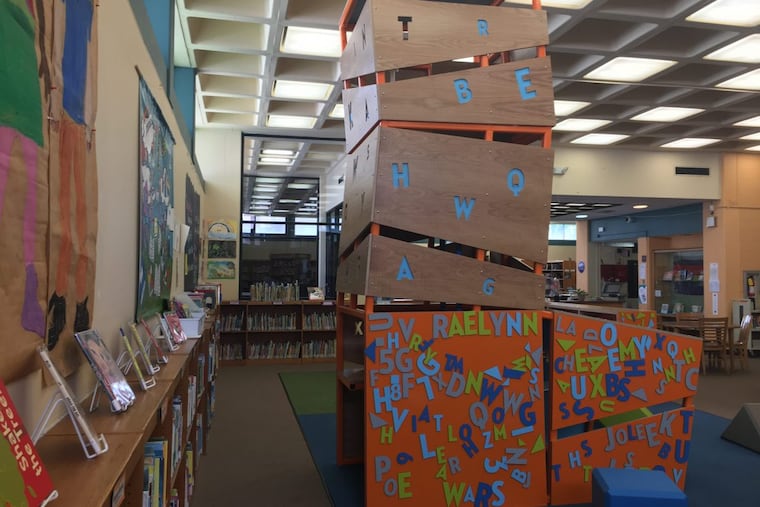Philly library initiative encourages kids to run, climb, and scale walls
Play-And-Learn installations at three Free Library branches encourage children to run, climb and play around the shelves of books.

If children were to run, climb, slide, or scale a wall at a normal library, they would likely get annoyed glances from patrons before being hushed by a librarian and carted away by their guardian. Certain branches of the Free Library of Philadelphia, however, are encouraging kids to get active.
The Free Library now has "Play-and-Learn" spaces at three branches — the Cecil B. Moore Library in North Philadelphia, the Whitman Library in South Philadelphia, and the Wyoming Library in Feltonville. The Cecil B. Moore play area was introduced in December, and the two others opened this week.
The Play-and-Learn spaces are funded by the William Penn Foundation with help from the Knight Foundation. They "draw on extensive research showing the impact of play on language development and cognitive ability," according to the library.
"We now know that children learn best through play, an understanding that has guided us to re-envision how our children's spaces could maximize children's learning," said Siobhan A. Reardon, Free Library president and director.
Design with all needs in mind
The spaces were designed by the architecture firm Digsau and Studio Ludo, a nonprofit that works on play environments.
Each branch has a set of large tangram blocks — interlocking pieces that can be built with and used as movable seats.
Each also has a central structure that encourages physical activity. The Cecil B. Moore Library has a rock wall, Wyoming has a stage, and Whitman has a tower filled with ladders for climbing and nooks for sitting. Each of the libraries also has magnetic panels with large letters that kids can rearrange to spell words and make sentences.
To determine what the play spaces should look like, Studio Ludo held workshops asking kids to build structures with blocks and cardboard and draw places that made them feel comfortable, founder and director Meghan Talarowski said. Sound engineers ensured the play wouldn't disrupt readers in other library sections.
The research resulted in spaces that catered not only to rambunctious, active youngsters but also to children who prefer cozy spaces to curl up with a book.
Talarowski said she was impressed by the libraries' willingness to include play in their facilities.
"It is very forward-thinking of [the library] to understand the connection between play and learning, and that they're willing to bring that to a space that's typically been more for quiet contemplation and reading," she said.
The science behind playtime
Each Play-and-Learn space was built with learning opportunities in mind, said Kathy Hirsh-Pasek, director of Temple University's infant language laboratory and a Brookings Institution fellow who is leading a team of psychologists studying the play areas. For example, the tangram seating can be arranged to fit together like a puzzle, and the Wyoming Library stage encourages children to learn through acting out scenes from books.
"Dramatic play not only enriches what you learn when you're reading the books," Hirsh-Pasek said, "but it helps you build a better narrative, it helps you build a better understanding of perspective, it helps you build vocabulary, and voila!"
A request to return
Thus far, children appear to be enjoying the addition of play to their libraries.
Bob McSwiggan lives down the street from the Whitman Library and often takes his grandchildren to such activities as arts-and-crafts and yoga there.
McSwiggan said he believed the project would be successful in attracting kids to the city's libraries. He and his preschool-age grandson, Mason McSwiggan, had visited the Play-and-Learn space for the first time recently. After playing on the new installation, McSwiggan said, Mason asked his grandpa to take him back to the library the following day.